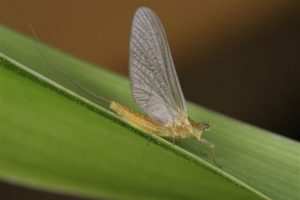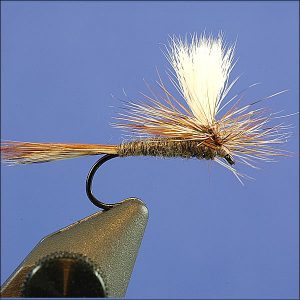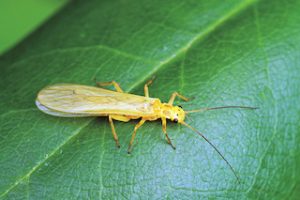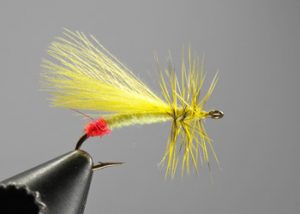
I could write thousands and thousands of tortured words on how to nymph fish. There are countless methods and variables that can be determined by anything from water conditions to the type of nymph you are trying to imitate. Needless to say, it’s a little more than we can chew in a newsletter article but consider this an introduction to what I like to call active nymphing.
I differentiate it with the word “active” because mostly, we are taught to fish our nymph(s) on a dead drift. In other words, we try to get our nymph to drift at the same speed as the current, usually under a strike indicator, with no motion or “action” at all. In many situations, this is a highly effective method for catching trout and one that definitely shouldn’t be abandoned. But there are some situations when putting a little movement in the fly, “little” being the key word, may produce a few more fish.
If you’ve spent much time fishing nymphs, this has probably happened to you at some point. You dead-drift your nymph(s) under a strike indicator multiple times through a great run with no results. When you quit paying attention to do something else (probably change flies), the line and nymph(s) straightens downstream, dragging in the current, and a fish hits it.
Nymphs will sometimes deliberately “drift” to other parts of the stream in a sort of migration. Other times, nymphs may unintentionally become dislodged from a rock and find themselves drifting down the stream. In either case, they are most often not particularly good swimmers, and are basically at the mercy of the current. Your dead-drift nymphing technique is primarily designed to replicate common scenarios like this. However, some nymphs, like the Isonychias mentioned in the other article in this newsletter, ARE good swimmers, and they don’t drift helplessly with the current. Caddis especially tend to be good swimmers.
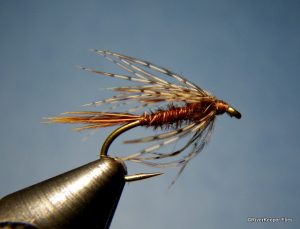
And at certain times, such as when it’s time to hatch, even poor swimming nymphs will uses gases to “propel” themselves through the water column to reach the surface. These nymphs are often referred to as emergers, and during these times, that upward, emerging motion of the nymph is often what triggers the fish to strike. So, that fish you caught “by accident” when you let your line get tight and drag behind you may not have been such a fluke. When your drift ended and the line straightened, your nymph “swung” from the stream bottom to the surface, likely resembling an emerging nymph. The trick now, is to replicate that how and when you want to, rather than by accident when you’re not paying attention.
The best way to get started with this technique is by finding a good stretch of pocket water or a nice riffle with some deeper seams and cuts. With faster current, you’ll be able to get closer to the fish and employ a high-sticking method. Use a longer rod, probably 8-9’, and use a leader approximately the same length as the rod. Tie on a generic, all-purpose soft-hackle pattern, like a soft-hackle Pheasant Tail or Hares Ear, and put a small split shot about 8” above it. Forget the strike indicator.
In a smaller pocket, keep just a couple of feet of fly line out past the rod tip, and make a short cast up and across to the top of the pocket. You should be slightly more than a rod length away from your target, preferably with a faster current between you and the target (this will help to conceal you from the fish). Keep your rod tip up and out by extending your arm, and try to maintain an approximately 90-degree angle between the line and rod. By keeping your rod tip up, you can keep most of the leader off the water. If you want the nymph to go a little deeper, drop your rod a little lower. It depends on the depth of the water.
Move the rod with the drift at the pace of the current to maintain the 90-degree angle, and allow the drift to continue in front of and slightly below you. You may get a strike during this portion of the drift. If so, you’ll probably feel it since you have most of the slack out of your line, but keep a close eye on your leader. It will tighten if a fish strikes and be another cue for you to set the hook. When you reach the end of the drift (bottom of the pocket), quit moving the rod with the drift. This will force the fly to swing from the bottom to the surface. If the fish hits during this portion of the drift, you will likely feel a very hard tug.
You can use this same method when fishing a bigger pocket or a longer seam in a riffle. You may just be using slightly more line and have a little longer drift. You may also choose to try one more technique on these longer drifts. Do everything as described above, but when the fly and line are passing in front of you, give your wrist 3 or 4 intermittent, slight upward twitches. This will allow the fly to “jump” or “pulse” in the current. Keep in mind that you want those wrist twitches to be very slight. Quickly and aggressively “pulling” the fly from the bottom to top will not look natural.

I suggested using a soft-hackle fly for this technique, mainly because the design of the fly lends itself well to the motion-based presentation, but I fish a variety of nymphs in this fashion. Definitely give it a try with your favorite caddis nymphs and emergers. And next time that water is a little high and stained from rain, give this a try with a dark Wooly Bugger or a dark, rubber-legged nymph like a Girdle Bug. You might be surprised at what you find!
More visible leaders with colored butt and mid sections can make this method of fishing much easier. They help a little with strike detection but mostly, they help you see and track the leader and better gauge the depth of the fly. I make leaders specifically for these short-line techniques and they are available for purchase here.


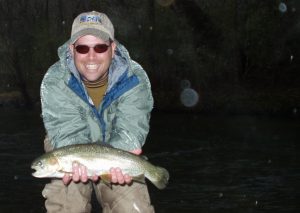
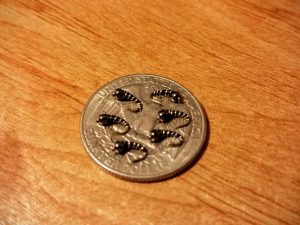
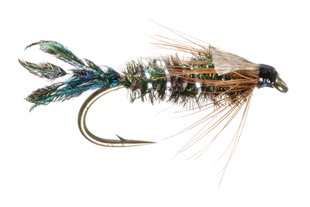 If you haven’t noticed by now, there are not a lot of “Hot New Flies” that I feature here. Most of the flies I fish with, particularly in the Smokies, are older, traditional patterns, or possibly an old staple that I’ve put a modern spin on. Maybe that makes me a curmudgeon. I don’t know. But until the old staples quit catching fish…
If you haven’t noticed by now, there are not a lot of “Hot New Flies” that I feature here. Most of the flies I fish with, particularly in the Smokies, are older, traditional patterns, or possibly an old staple that I’ve put a modern spin on. Maybe that makes me a curmudgeon. I don’t know. But until the old staples quit catching fish…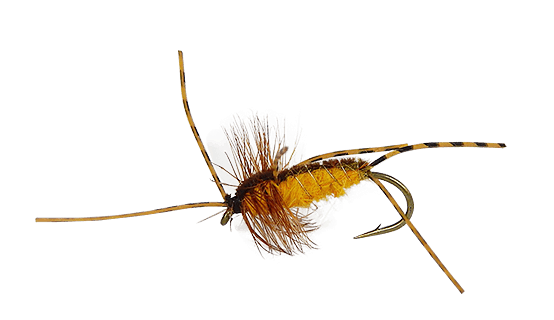 Since we’re talking about big browns this month, I thought it only fitting to feature one of my favorite flies for big brown trout. While I have caught a number of big browns on small flies over the years, most of the big guys in the mountains have come on larger stonefly nymphs. This is a little bit misleading as most of the large browns I’ve caught in the Smokies I spotted before I fished for them. And when I spot a big brown trout, I almost always tie some sort of stonefly nymph imitation to my line. Who is to say I wouldn’t have caught those same fish on a #20 Zebra Midge had I chosen that fly?
Since we’re talking about big browns this month, I thought it only fitting to feature one of my favorite flies for big brown trout. While I have caught a number of big browns on small flies over the years, most of the big guys in the mountains have come on larger stonefly nymphs. This is a little bit misleading as most of the large browns I’ve caught in the Smokies I spotted before I fished for them. And when I spot a big brown trout, I almost always tie some sort of stonefly nymph imitation to my line. Who is to say I wouldn’t have caught those same fish on a #20 Zebra Midge had I chosen that fly?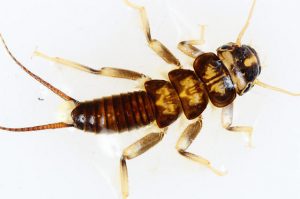
 Even with all the newfangled fly patterns and fly tying materials available today, I usually find myself sticking more with the old staples, or at least pretty similar variations. And I stick with them for one main reason: They work! Created by fly tying guru, Dave Whitlock in the 1960’s, this fly definitely falls under the “old staple” category.
Even with all the newfangled fly patterns and fly tying materials available today, I usually find myself sticking more with the old staples, or at least pretty similar variations. And I stick with them for one main reason: They work! Created by fly tying guru, Dave Whitlock in the 1960’s, this fly definitely falls under the “old staple” category.

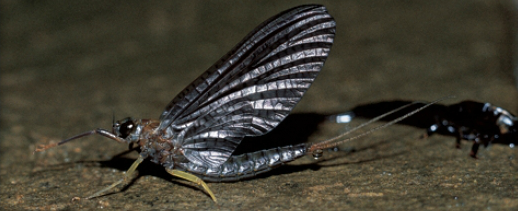

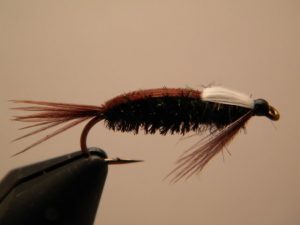
 In June, hatches start to thin out. We still see a fair number of Yellow Sallies and a smattering of caddis and mayflies, but the heavier, attention getting hatches of spring have mostly come to an end. But when summer eases its way into the mountains, trout turn their attention to terrestrials, and so should you. We’ll talk about several varieties of terrestrials over the coming months but we’ll start with the granddaddy of all mountain terrestrials: the Green Weenie.
In June, hatches start to thin out. We still see a fair number of Yellow Sallies and a smattering of caddis and mayflies, but the heavier, attention getting hatches of spring have mostly come to an end. But when summer eases its way into the mountains, trout turn their attention to terrestrials, and so should you. We’ll talk about several varieties of terrestrials over the coming months but we’ll start with the granddaddy of all mountain terrestrials: the Green Weenie.
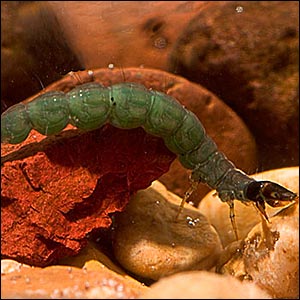
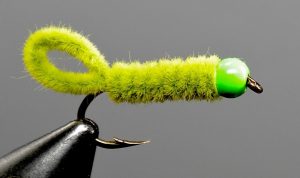
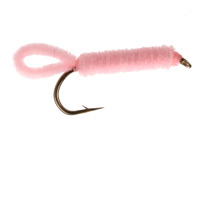
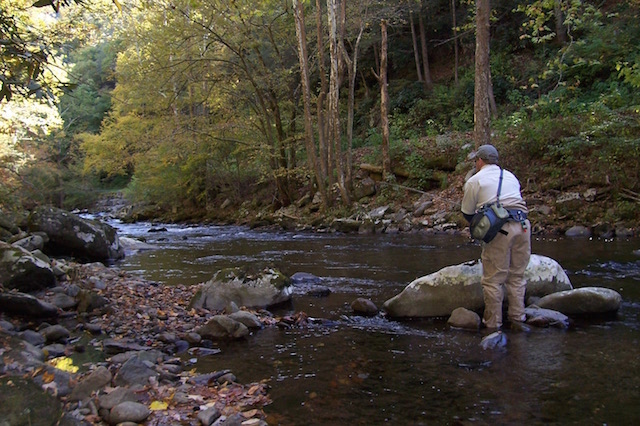 Last month, I talked about ways to simplify your fly selection and offered tips on how to choose flies based on season and what was hatching. Based on the number of questions I had, however, I left out an important part of the process. Many folks said they are often uncertain when to fish a dry fly vs. a nymph.
Last month, I talked about ways to simplify your fly selection and offered tips on how to choose flies based on season and what was hatching. Based on the number of questions I had, however, I left out an important part of the process. Many folks said they are often uncertain when to fish a dry fly vs. a nymph.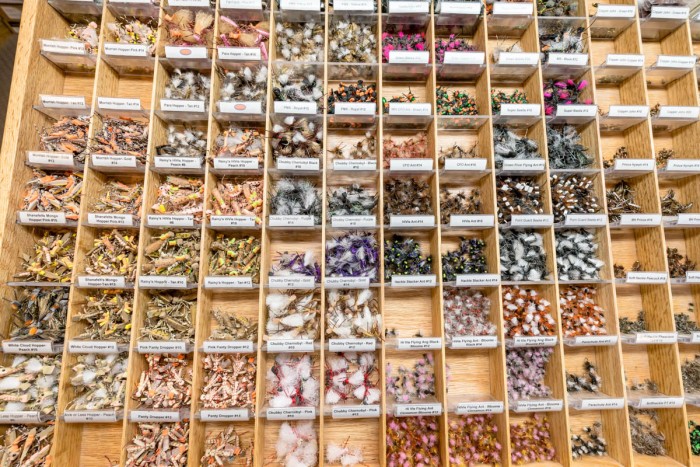 If you are new to fly fishing, particularly for trout, it is easy to be overwhelmed by the number of fly patterns available. Which ones do I need? What colors? What sizes? Do I need all of them? First of all, if you tried to carry every trout fly with you, you’d need a wheelbarrow to go fly fishing! While there is no way to make it immediately simple, there are ways to simplify the process. As with many things in fly fishing, you try to find a good starting point and learn as you go from there.
If you are new to fly fishing, particularly for trout, it is easy to be overwhelmed by the number of fly patterns available. Which ones do I need? What colors? What sizes? Do I need all of them? First of all, if you tried to carry every trout fly with you, you’d need a wheelbarrow to go fly fishing! While there is no way to make it immediately simple, there are ways to simplify the process. As with many things in fly fishing, you try to find a good starting point and learn as you go from there.